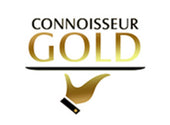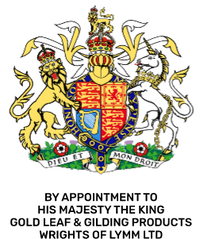Edible Gold Leaf Across the World - Denmark
- by sam@wrightsoflymm.co.uk User
Introduction
Edible gold leaf has fascinated cultures for centuries, symbolizing wealth, luxury, and refinement. In Denmark, the tradition of decorating food and beverages with goldleaf, silver leaf, and shimmering gold flakes dates back to the influence of European nobility. Today, chefs and artisans across Denmark use 23 and 24 carat edible metals to enhance desserts, gourmet dishes, and beverages, making them stand out with brilliance and prestige.
A Brief History of Gold Leaf in Denmark
The use of edible gold can be traced back to medieval Europe, when it was imported and reserved for royal banquets. In Denmark, during the Renaissance and early modern periods, gold leaf and silver leaf were primarily seen at royal feasts and in the halls of aristocrats. These thin sheets of precious metal symbolized divine favour, wealth, and power.
By the 18th and 19th centuries, as trade expanded, goldleaf became more accessible, though still considered a delicacy for the elite. Records show that confectioners and bakers in Copenhagen sometimes incorporated gold dust and silver dust into their creations for special occasions such as weddings or national celebrations.
Gold Leaf in Danish Gastronomy Today
Modern Danish cuisine, particularly influenced by the New Nordic movement, has revived the use of edible goldleaf and silver flakes as a way to combine tradition with contemporary culinary artistry. High-end restaurants in Copenhagen, such as those awarded Michelin stars, occasionally use 23 carat or 24 carat edible gold to accentuate dishes.
-
Desserts and Pastries: Danish pastry chefs add gold flakes or sheets of gold leaf to marzipan cakes, flødeboller (chocolate-covered marshmallow treats), and festive layer cakes.
-
Fine Dining: Gourmet chefs may use 24 carat gold dust as a garnish for seafood dishes or to highlight seasonal ingredients, creating a visually stunning contrast.
-
Beverages: Luxury cocktail bars in Denmark often serve champagne, aquavit, or craft cocktails with suspended gold dust or floating silver flakes.
23 Carat vs. 24 Carat Edible Gold
Not all edible metals are the same. In Denmark, both 23 carat and 24 carat edible gold are widely available.
-
24 Carat Gold Leaf: Considered the purest and most luxurious form, 24 carat goldleaf is free of alloys and entirely safe to eat. Danish chefs use it when absolute opulence is desired.
-
23 Carat Gold Leaf: Slightly less pure, often alloyed with a trace of silver, 23 carat gold leaf is equally popular in Danish culinary art. Its tone is warmer and can sometimes be more affordable.
Similarly, silver leaf, silver flakes, and silver dust are used in the same way, often chosen for their cooler shine and distinctive elegance.
Cultural Significance in Denmark
Gold has long been symbolic in Danish art and design, from gilded church altars to royal regalia. In food, the use of gold leaf is more than just decoration—it represents celebration and cultural continuity. For weddings, anniversaries, and national holidays, the shimmering addition of gold flakes or silver dust transforms ordinary dishes into extraordinary experiences.
Danish chocolatiers, for instance, sometimes coat truffles with gold dust, making them a favoured gift item. Similarly, craft breweries experimenting with luxury beers occasionally use goldleaf to appeal to international markets.
Availability and Modern Trends
Edible gold leaf and silver leaf are readily available in Denmark through specialty culinary shops and online suppliers. Bakers and chefs can purchase sheets, flakes, or even powdered gold dust and silver dust for various applications.
Current trends in Denmark show a growing interest in blending sustainability with luxury. While 24 carat goldleaf remains a symbol of indulgence, chefs are mindful to use it sparingly, ensuring that its impact is both visual and cultural rather than wasteful.
Conclusion
The story of edible gold leaf in Denmark is one of transformation—from medieval royal banquets to Michelin-starred restaurants and artisan bakeries. Whether in the form of 23 carat or 24 carat goldleaf, delicate silver leaf, glimmering gold flakes, or sparkling silver dust, these edible metals continue to symbolize luxury, celebration, and artistry in Danish gastronomy.
For Danes and visitors alike, encountering a dessert dusted with gold or a cocktail shimmering with silver is more than just a culinary delight—it is a taste of history, culture, and refined elegance.






